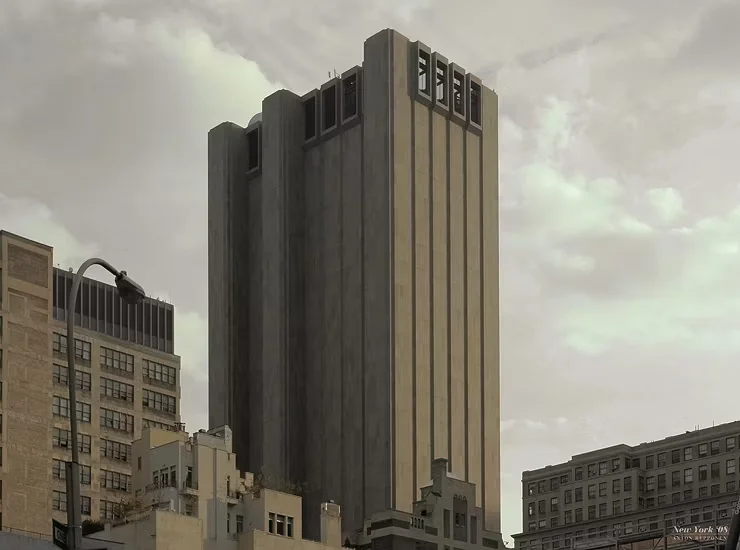In the heart of Lower Manhattan, a distinctive 29-story skyscraper, notable for its lack of windows, stands tall and mysterious. Known by its code name Titanpointe and situated at 33 Thomas Street, this building has intrigued New Yorkers for years.

Constructed in 1974, the building was originally designed by the architectural firm John Carl Warnecke & Associates to serve as a fortified hub for vital telecommunications equipment, capable of withstanding atomic blasts. Rising 550 feet into the New York skyline, it presents itself as a gray tower of concrete and granite, unlike any other structure in the vicinity. Its featureless facade, devoid of windows, presents a stark silhouette against the city skyline, remaining unilluminated at night and casting a formidable shadow by day. The building emits a faint hum from its square vents, often masked by the bustling sounds of the city.
Dubbed the “Long Lines Building,” 33 Thomas Street has captured the imagination of New Yorkers as one of the city’s most peculiar and iconic skyscrapers. Despite its prominence, the true purpose of this enigmatic structure has been shrouded in secrecy
WATCH THE VIDEO BELOW:
Behind its cryptic exterior, 33 Thomas Street harbors a deeper secret. Evidence from documents obtained by whistleblower Edward Snowden, along with architectural plans and interviews with former AT&T employees, suggests that the building served as an NSA surveillance site, codenamed Titanpointe.
Within the confines of the building lies a major international gateway switch, facilitating phone calls between the U.S. and countries worldwide. It is believed that the NSA intercepted these communications from a secure facility within the AT&T building. This covert surveillance program targeted not only international organizations but also various countries, including U.S. allies.
While AT&T has cooperated with the NSA on surveillance efforts, details about the specific role of facilities like 33 Thomas Street remain scarce. The Snowden documents shed light on the integration of NSA equipment into AT&T’s network, revealing the methods employed by the agency to gather communications data.
The NSA’s presence within this iconic skyscraper raises concerns about the extent of surveillance in the modern world. The close collaboration between AT&T and the NSA underscores the challenges of maintaining privacy and oversight in an era of advanced technology and government surveillance.
In summary, 33 Thomas Street stands as a symbol of both the history of telecommunications and the complexities of modern surveillance. While its involvement in government spying may never be fully disclosed, it serves as a reminder of the delicate balance between privacy and security in our interconnected world.
Leave a Reply